Sold antiquities
Archive of sold antiquities
All artefacts sold in our gallery are fully documented in our online archive and database. Being a specialist ancient art dealer, preserving also the more recent history of each and every piece sold in our shop is at our heart. That is particularly useful for artefacts that changed owners in the meantime. Information that may have been lost in the process can be easily restored from our archives. Please do not hesitate to contact us if you need further information about ancient items that have been sold in our gallery. We can help you with reconstructing the history of ownership for those items. All information about our customers will be kept confidential, of course.-
 Roman eye beads
Roman eye beadsGroup of miniature artworks made of mosaic glass. The Roman eye beads are from early Imperial times.
Price: on request Three ancient beads
Three ancient beadsThe group consists of one ancient eye bead with multi-coloured glass inlays and two beads from beautiful green glass. Roman Imperial times.
Price: on request Three ancient beads
Three ancient beadsThe group consists of two ancient eye beads with multi-coloured glass inlays and one bead from beautiful green glass. Roman Imperial times.
Price: on request Bronze Age Elamite ceramic vessel
Bronze Age Elamite ceramic vesselBowl from the Middle Elamite period with painted geometric design. From the area of ancient Iran.
Price: on request Bronze Age Elamite ceramic vessel
Bronze Age Elamite ceramic vesselBowl from the Middle Elamite period with painted geometric design. From the area of ancient Iran.
Price: on request Scarab with lion
Scarab with lionThe scene shows a walking lion. It is framed by an oval cord. This scarab is described in the catalogue of Irène Gautier-Vodoz.
Price: on request Scarab with protective formula
Scarab with protective formulaAmulet for protection. Stilized lotus flowers on the upper side. Magic formula on the lower side. This scarab is described in the catalogue of Irène Gautier-Vodoz.
Price: on request Scarab with geometric motive
Scarab with geometric motiveThe lower side exhibits a symmetrical arrangements of cords, two of which are wrapped around each other. This scarab is described in the catalogue of Irène Gautier-Vodoz.
Price: on request
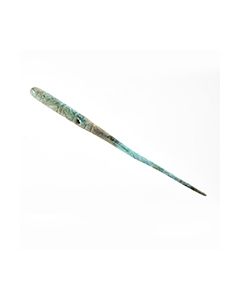 Bronze pin from Luristan
Bronze pin from LuristanLovely bronze pin from the early Iron Age. The head is decorated by engraved lines and a geometric knob.
Price: on request Scarab with geometric motive
Scarab with geometric motiveThe motive exhibits two symmetry axes and at least six triangles. A wonderful artistic expression of the highly evolved Egyptian maths. This scarab is described in the catalogue of Irène Gautier-Vodoz.
Price: on request Scarab with pattern of circles
Scarab with pattern of circlesThe beetle stone bears a popular motive of the Middle Empire. A nice example of its kind. This scarab is described in the catalogue of Irène Gautier-Vodoz.
Price: on request Scarab with magic spell
Scarab with magic spellThe hieroglyphs are of the so called anra design, a magic spell in the ancient Egyptian belief. The scarab is from the 13th to 15th dynasty. It is described in the catalogue of Gautier-Vodoz.
Price: on request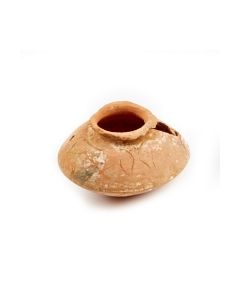 Italo-corinthian Pyxis with horses
Italo-corinthian Pyxis with horsesFrom an old Swiss collection, btw 1986 and 2001 on loan at the archeologic collection of the University of Zürich. About 6th century BC.
Price: on request Small bowl from Magna Graecia
Small bowl from Magna GraeciaFrom an old Swiss collection, btw 1986 and 2001 on loan at the archeologic collection of the University of Zürich. About 6th century BC.
Price: on request Tall apulian Loutrophoros
Tall apulian LoutrophorosImpressive, very large amphora. From old German collection Dr. Tillmann. Coming with an Art Loss certificate.
Price: on request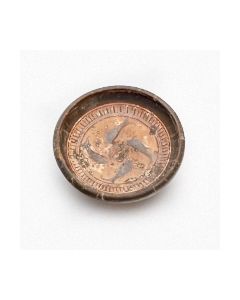 Attic black-fugure plate with dolphins
Attic black-fugure plate with dolphinsLarge jar with ovoid body and trefoil mouth. Decorated with carved lines. From the old German collection Dr. Tillmann.
Price: on request Etruscan bucchero oinochoe from an old collection
Etruscan bucchero oinochoe from an old collectionLarge jar with ovoid body and trefoil mouth. Decorated with carved lines. From the old German collection Dr. Tillmann. Coming with an Art Loss certificate.
Price: on request Roman oil lamp showing emperor Claudius
Roman oil lamp showing emperor ClaudiusVery rare depiction of this Roman emperor on a piece of pottery intended for daily use. Very well preserved, worth the exhibition in a museum. Coming with an Art Loss certificate.
Price: on request Large Etruscan bucchero oinochoe from Orvieto
Large Etruscan bucchero oinochoe from OrvietoPerfectly preserved, impressive jar. Never damaged or restored. Worth the exhibition in a museum. From the old German collection Dr. Tillmann. Coming with an Art Loss certificate.
Price: on request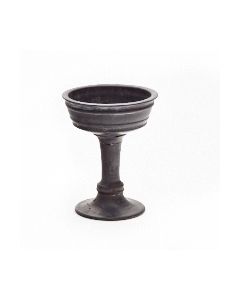 Tall Etruscan Chalice
Tall Etruscan ChaliceProbably manufactured at Vulci. From an old German collection Dr. Tillmann.
Price: on request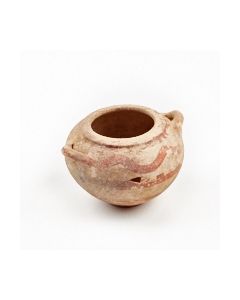 Italo-geometric jar with two handles
Italo-geometric jar with two handlesFrom an old Swiss collection, btw 1986 and 2001 on loan at the archeologic collection of the University of Zürich. 7th century BC, perfectly preserved ornamental painting.
Price: on request Perfectly preserved apulian Epichysis
Perfectly preserved apulian EpichysisEx private collection of a New Jersey lawyer. Great condition, vivid colors.
Price: on request Roman gold ring with intaglio
Roman gold ring with intaglioA lovely piece of Roman jewellery in good condition. The chalcedony intaglio shows a portrait head. Dating to the 3rd century AD.
Price: on request Large pottery vessel in the shape of a zebu
Large pottery vessel in the shape of a zebuImposing Western Asiatic vessel of the Amlash culture. Including TL analysis. Around 1000 BC.
Price: on request Imposing elamite ceramic spouted jar
Imposing elamite ceramic spouted jarThe jar has a biconical body and a spout in form of a stilized bird's head. From ancient Iran at the beginning of the 1st Millenium BC.
Price: on request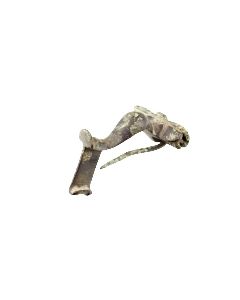 Roman knee brooch
Roman knee broochVariant of one of the most popular brooch types during Roman Imperial times. Nice preservation and lovely patina.
Price: on request Roman fibula with beautiful enamel
Roman fibula with beautiful enamelElaborate work dating to the 2nd century AD. The well preserved enamel is a testimony to the colourful world of ancient art.
Price: on request Egyptian shabti
Egyptian shabtiFunerary statuette of faience. The opposed hands might indicate Tanis as origin. Third Intermediate Period of Ancient Egypt.
Price: on request Egyptian ushabti from the Third Intermediate Period
Egyptian ushabti from the Third Intermediate PeriodFunerary statuette of faience with black paint. The opposed hands might indicate Tanis as origin. Third Intermediate Period of Ancient Egypt.
Price: on request Louis XIV: Douzième d'écu au buste juvénile
Louis XIV: Douzième d'écu au buste juvénileBeautiful silver 1/12 Ecu piece from the famous Sun King. Lyon mint, 1663 AD.
Price: on request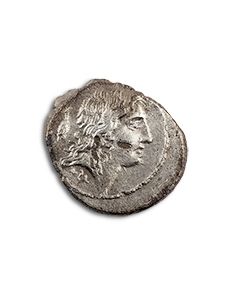 M. Plaetorius M. F. Cestianus Denarius
M. Plaetorius M. F. Cestianus DenariusRoman Republic, Rome mint, 57 BC. Obverse showing head of Bonus Eventus, caduceus on reverse.
Price: on request Domitianus Denarius
Domitianus DenariusThe reverse shows Minerva with thunderbolt, spear and shield. Rome mint, 93-94 AD.
Price: on request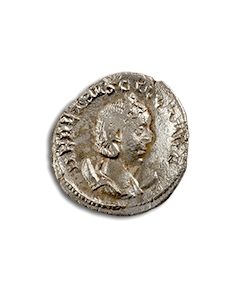 Herennia Etruscilla Antonianus
Herennia Etruscilla AntonianusWife of Traianus Decius, Mother of Herennius Etruscus and Hostilian.
Price: on request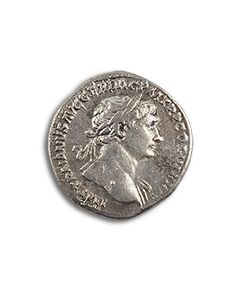
 Dagger from Luristan
Dagger from LuristanThe Luristan short dagger has an elegant and slim shape. From an old German collection. Coming with an Art Loss certificate.
Price: on request

